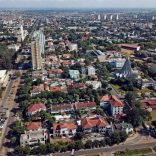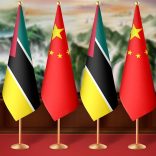Mozambique: Government holds public consultation on creation of the General Inspectorate of the ...
World Bank revises 2019 growth in Mozambique up to 3.5 per cent

in file CoM
The World Bank revised its economic growth forecast for Mozambique upwards to 3.5 per cent of gross domestic product (GDP) in 2019 and 4.1 per cent in 2020.
The review by World Bank experts in the ‘Global Economic Perspectives’ report released on Tuesday keeps the forecast for 2018 at 3.3 per cent but represents an improvement of 0.1 and 0.5 percentage points for 2019 and 2020 respectively, compared to forecasts made 12 months ago.
The document states that Mozambique suffered from a 40 per cent reduction in African foreign direct investment and was affected by neighbouring countries such as Zimbabwe and Tanzania and also by the discovery of the ‘hidden’ public debt.
“In Mozambique, the ratio of public debt to GDP has increased by about 50 percentage points since 2013, reaching 102 per cent in 2018, with interest payments rising from 2.6 per cent of revenues to 16.5 per cent in the same period. The deterioration was accentuated by increasing deficits, as fiscal policy remained at a lower level of raw material prices and moderate growth, and was exacerbated by the inclusion in 2016 of previously undisclosed foreign trade debt,” the World Bank economists observe.
The result, the experts note, is that “the country is in debt, and several payments to external creditors have been missed,” and the fact that presidential and legislative elections are scheduled for October may make things difficult.
“Political uncertainty and simultaneous weakening of economic reforms may continue to weigh on economic prospects in many countries. In countries holding elections in 2019 (e.g. Malawi, Mozambique, Nigeria, South Africa), internal political factors can cause the commitment required to contain fiscal deficits or implement structural reforms [to weaken], especially where the levels of public debt are high and increasing,” they warn.
Despite these warnings, Mozambique maintains above-average economic growth for Sub-Saharan Africa, which in 2018 is expected to grow 2.7 per cent, a downward revision of 0.4 percentage points over June.
This scenario reflects “a slow expansion in the largest economies in the region in the face of moderate trade growth, tight financial conditions and weak prices for metals and agricultural products”.
Regional growth is expected to reach 3.4 per cent by 2019 and an average of 3.7 per cent by 2020-21, “depending on reduced political uncertainty and more investment in the big economies, coupled with continued robust growth in countries with non-intensive resources”.
Per capita income growth is expected to remain well below the long-term average in many countries, meaning little progress in poverty reduction.
According to the World Bank, key risks for sub-Saharan African countries include “the possibility of slower-than-projected growth in China and the Euro zone, further declines in commodity prices, a tightening of global financing conditions, fiscal slippage, structural reforms and conflict”.












Leave a Reply
Be the First to Comment!
You must be logged in to post a comment.
You must be logged in to post a comment.